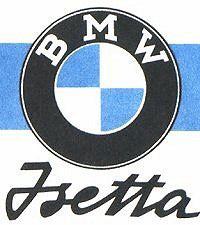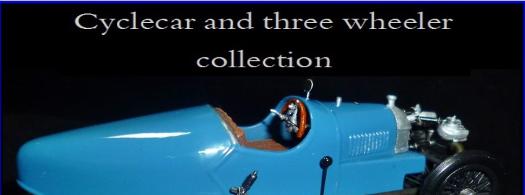
BMW Isetta 300
Post WWII few people had spare cash for motor cars and a boom in small cars, often called bubblecars, occurred. In Italy Iso designed their Isetta, or “little Iso” specifically for this market. Unlike anything the motoring world had seen before the tiny egg shaped Isetta was only 2.29m (7.5ft) long by 1.37m (4.5ft) wide. Iso were actually manufacturers of refrigerators and their design has unkindly been likened to a collision between “a refrigerator, a scooter, and an ovulating chicken”. However, Iso were very serious about their clever little car and entered 7 Isettas in the 1954 Mille Miglia. Five Isettas did finish, the first of which maintained an average speed of 45mph.
The driver and passenger entered the vehicle through the front and sat on a simple bench seat. The entire front of the car was hinged and the steering wheel and instrument panel swung out with the door. In the event of a crash the occupants were expected to get out of the car through a retractable canvas sunroof. A heater was optional and “air conditioning” was achieved by retracting the aforementioned canvas roof!
In actual fact this little car did offer a modicum of comfort and at a pinch could also carry a small child so to a young family it was an attractive mode of transport. Introduced in November 1953 at the Turin motor show the little car soon became very popular and was made under licence in Spain, Belgium, France, Brazil, Germany, and the United Kingdom. Selling 161,728 units in in 1955 the Isetta was the worlds top selling single-cylinder car and the first mass-production car to achieve fuel consumption figures of 3L/100km or 94mpg.
BMW's version of the 13hp, 247cc motorcycle engined vehicle went into production from October 1954 and represented a much cheaper alternative for German families than the 502 and 507 models BMW had been turning out. Their Isetta was extensively re-engineered, so much so that very few of the BMW Isetta parts are interchangeable with Iso Isetta parts largely because BMW used their own 250cc motorcycle engine. It may look much the same externally but mechanically was a very different beast. BMW also uprated the engine in later models to produce a 300, 600 and, later still, a 750cc model.
This little car would later be called "Little Car that saved BMW" and was also rumoured to be used in smuggling escapees out of iron curtain countries. Owned by the rich and famous as well as the working class, Cary Grant and Elvis Presley both drove Isettas, this little car actually had some cutting edge design ideas. It had a mid-engine motor location, a centre mounted brake light, an integrated starter motor/generator and an aerodynamic body, even if it did look like an egg.
Popularity of the Isetta waned through the 1960's with the introduction of the more spacious and practical VW Beetle, Fiat 500 and Austin/Morris Mini eating into sales, by the end of the decade it was all but obsolete.




1/24th scale kit.
Built by Rod.


This model was built in April 1999 along with the Messerschmitt KR200 from the same Gunze Sangyo kit, # G-196, which was released during the 1980s. Although fairly simple kits the pair do look to be well shaped and make very nice replicas of the original vehicles. The opening doors are particularly useful in enabling us to show how quirky the design ideas had to be to facilitate entry to these rather small cars.
Rod used Halfords acrylic car spray paints for the bulk of the painting supplemented by Humbrol enamels and acrylics, as well as Citadel acrylic ink washes from the Games workshop, for the details. Bare Metal Foil was applied to the areas of bright work alongside the chrome parts in the kit.
RETURN TO :-
